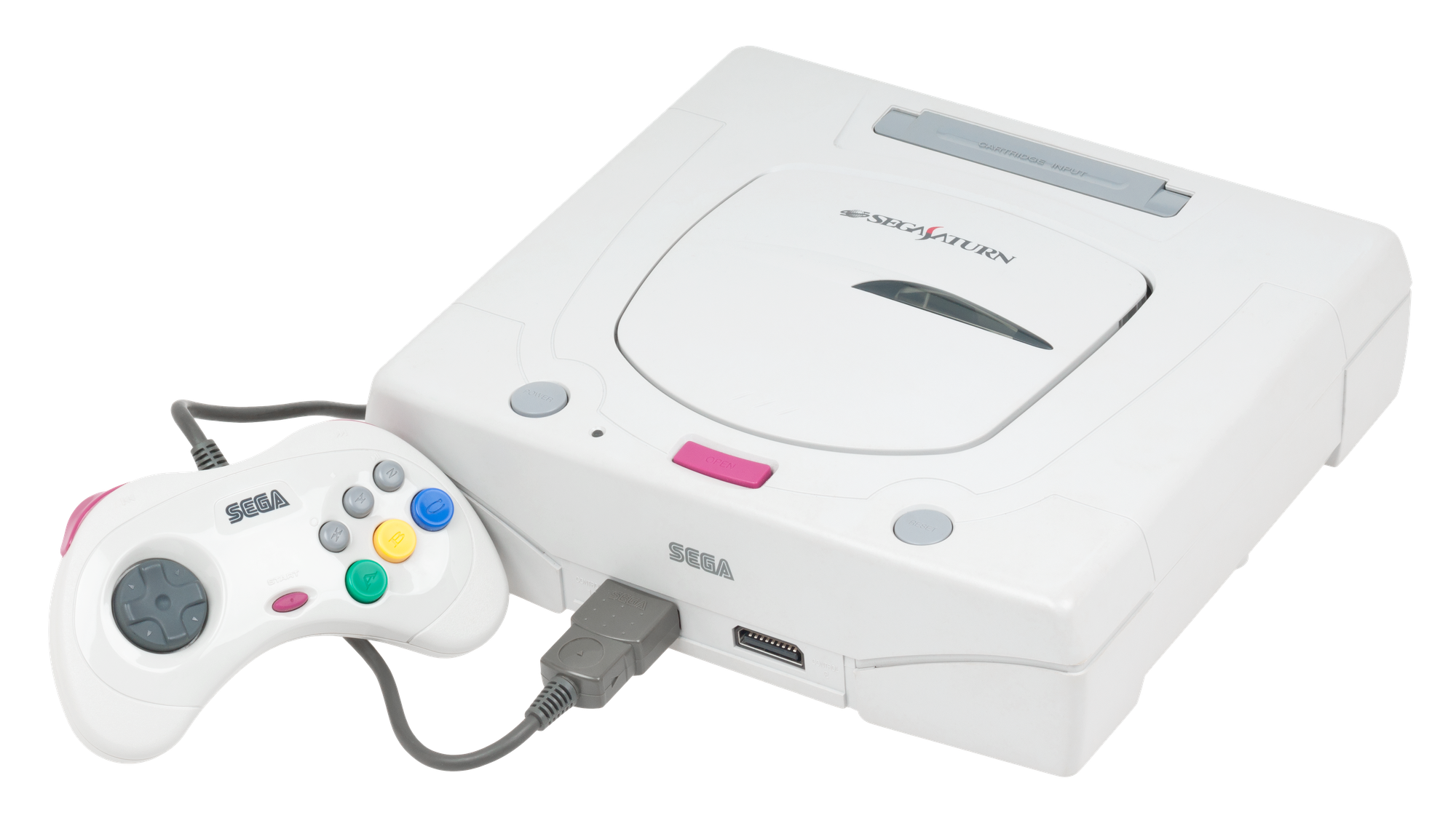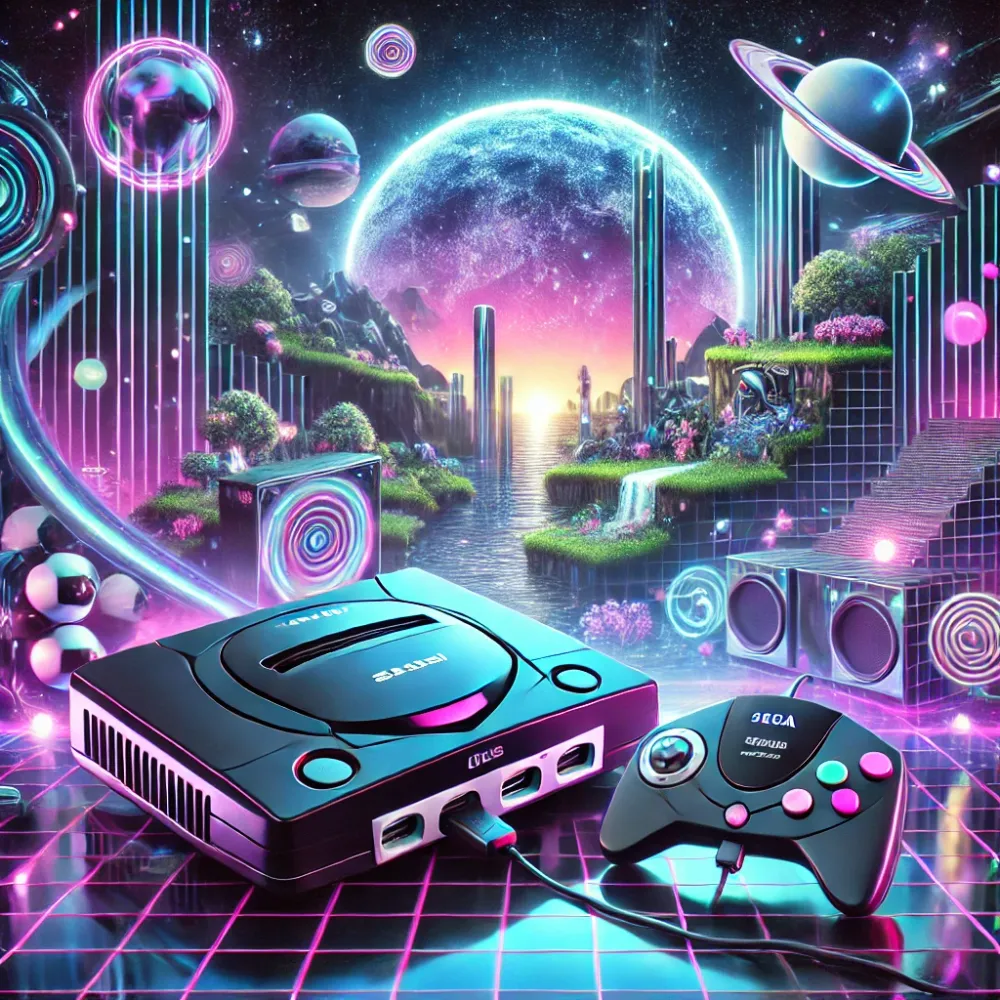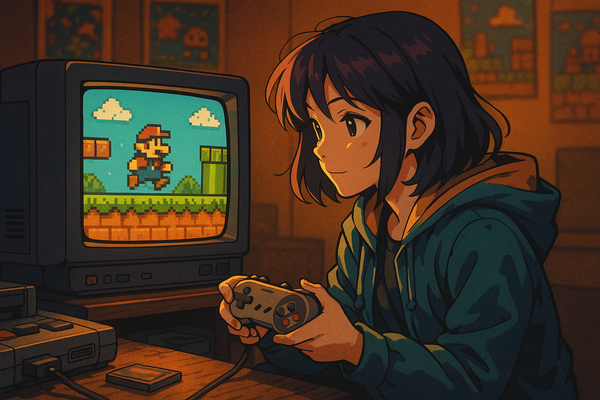Sega Saturn: Pioneering 3D Gaming and Cult Classics
Released in 1994 in Japan and 1995 in North America and Europe, the Sega Saturn was Sega’s ambitious entry into the fifth generation of gaming consoles. Designed to compete with Sony’s PlayStation and Nintendo’s upcoming Nintendo 64, the Saturn aimed to push the boundaries of home gaming with cutting-edge 2D and 3D capabilities. However, while it introduced several groundbreaking features and beloved games, the Saturn struggled to gain widespread traction due to its complex architecture and stiff competition.

The Saturn boasted dual CPUs and eight processors, making it a powerhouse for its time. However, this complex setup also posed challenges for developers, many of whom found it difficult to optimize their games for the system. Despite these hurdles, the Saturn built a loyal fanbase thanks to its strong library of games, including innovative titles like Nights into Dreams... and the continuation of beloved Sega franchises.
Technical ambition and development challenges
The Sega Saturn was a technical marvel in its day, capable of handling rich 2D sprites and early 3D graphics. Its dual Hitachi SH-2 CPUs were designed for high-speed calculations, enabling impressive effects such as scaling, rotation, and texture mapping. However, this architecture, combined with a lack of development tools, made programming for the Saturn notoriously difficult. Developers often struggled to fully utilize its power, leading to games that failed to showcase the system’s potential.
In an era when the industry was shifting toward 3D gaming, the Saturn’s strengths in 2D graphics were both a blessing and a curse. While it excelled at arcade-style games and 2D fighters like Street Fighter Alpha and Marvel vs. Capcom, it struggled to compete with the PlayStation in delivering polished 3D experiences.
Nights into dreams...: A revolutionary experience
Among the Sega Saturn’s standout titles was Nights into Dreams..., developed by Sonic Team and released in 1996. Created by Yuji Naka, the mastermind behind Sonic the Hedgehog, Nights into Dreams... was a bold departure from traditional platformers. Players took control of Nights, a jester-like character who could fly through dreamlike environments, collecting orbs and defeating enemies.

Nights into Dreams... was praised for its fluid 3D gameplay, vibrant visuals, and a sense of freedom rarely seen in games of the time. The game made full use of the Saturn’s hardware, delivering colorful, expansive levels with smooth animations and an ethereal soundtrack. Sega even released an analog controller specifically for Nights, offering a level of precision and control that enhanced the experience.
The game’s dreamlike atmosphere and innovative mechanics resonated with players, earning it critical acclaim and a dedicated following. For many, Nights into Dreams... symbolized the Saturn’s potential to deliver unique and imaginative gaming experiences.
The struggles of the saturn
Despite its technical capabilities and innovative games, the Saturn faced significant challenges in the market. Sega’s decision to launch the console early in North America, surprising retailers and consumers alike, resulted in a lack of available units and software at launch. The PlayStation’s simpler architecture and aggressive marketing strategy further overshadowed the Saturn, leaving it in a distant third place behind Sony and Nintendo.
Additionally, Sega’s fragmented approach to hardware—supporting multiple platforms like the Sega CD and 32X alongside the Saturn—confused consumers and diluted the company’s resources. The Saturn’s high price and lack of third-party developer support further hindered its ability to compete effectively.
The legacy of the Sega Saturn
While the Saturn may not have achieved commercial success, it left a lasting legacy in the gaming industry. It was home to a library of cult classics, including Panzer Dragoon Saga, Shining Force III, and Virtua Fighter 2, many of which remain highly sought after by collectors and fans. The Saturn also set the stage for Sega’s transition into software development, as the lessons learned from its struggles informed the company’s future strategies.
The Saturn is celebrated among retro gaming enthusiasts for its bold experimentation and the passion evident in its best games. For those who owned a Saturn, it represented a time of creativity and ambition, when Sega dared to challenge conventions and push the boundaries of gaming.
The Saturn’s enduring influence
Today, the Sega Saturn is remembered as a console that prioritized creativity over conformity. Its contributions to gaming, from the groundbreaking visuals of Nights into Dreams... to its emphasis on 2D artistry, continue to inspire developers and players alike. While it may not have been a commercial powerhouse, the Saturn’s legacy is one of innovation, imagination, and an unyielding commitment to pushing the limits of technology.


